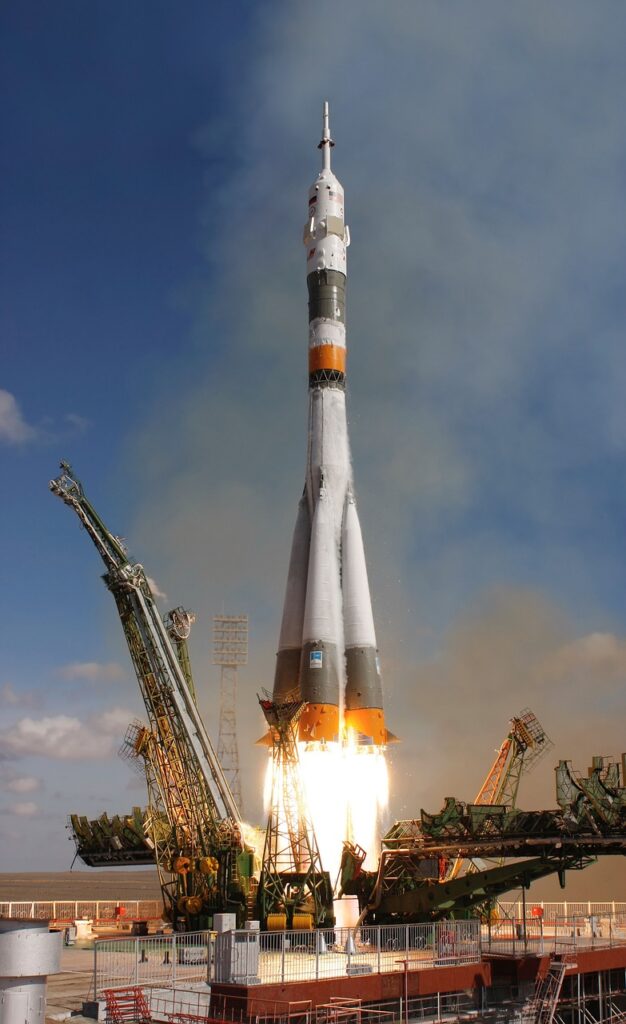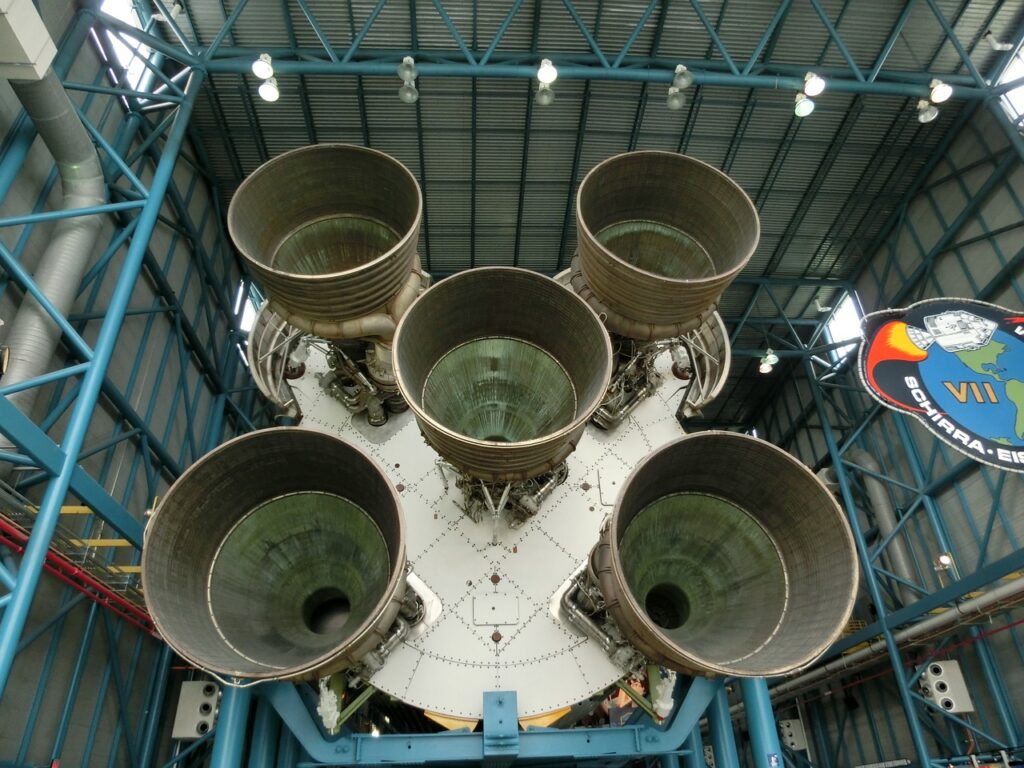Introduction:-
Rocket Propulsion:-
The propulsion of a rocket is an example of momentum of conservation. In a rocket, gases at high temperature and pressure, are produced by the combustion of fuel. They escape with a large constant velocity through a nozzle.
The large backward momentum of the gases imparts an equal forward momentum to the rocket. But due to the decrease in the mass of the rocket fuel system, the acceleration of the rocket keeps on increasing.
.

Mathematical expression:-
(i) It is an example of variable mass system.
(ii) It is based on the principle of conservation of linear momentum (if effect of gravity neglected) or Newton’s third law.
(iii) If Ur is the velocity of emerging gases relative to rocket and dm/dt is the rate of fuel consumption.
Thrust on rocket [F] = Ur dm/dt
Net force on rocket = Ur dm/dt – mg
Net acceleration of rocket a = Ur / m . dm / dt – g
Where m = m0 – dm /dt . t,
m0 = Initial velocity
Velocity of rocket at any instant v = ur loge {m0 / m} (When velocity is zero)
Example:- A 800 kg rocket is fired from earth so that exhaust speed is 1200 m/s. Then calculate mass of fuel burning per second, to provide initial thrust to overcome its weight. (g = 10 m/s2).
Solution:- [F] = Ur dm / dt = mg
800 X 10 = 1200 X dm / dt
Dm /dt = 80 / 12 = 40 / 6 = 20 / 3 = 6.67 kg / sec.
Types of Rocket Propulsion
There are various types of rocket propulsion systems, each with its exclusive advantages and challenges. The most common types include:
1. Chemical Propulsion:-
This is the most widely used method, where chemical reactions (normally combustion) produce hot gases that are expelled to generate thrust.
Chemical rockets are divided in following categories:-
(i) Solid-propellant rockets:– Solid-propellant rocket uses a solid mixture of fuel and oxidizer as its propellant, which is packed into the combustion chamber. When ignited, the propellant burns from the inside to out and produces hot gases to expelled through a nozzle to generate thrust. Solid-propellant rockets are simple in quality, reliability, and ability to be stored for long periods without degradation.
(ii) Liquid-propellant rockets:- Liquid-propellant rocket uses liquid fuel and oxidizer, stored in separate tanks, which are pumped into a combustion chamber where they mix and burn to produce thrust. Liquid-propellant rockets offer greater control and efficiency compared to solid-propellant rockets.
(ii) Hybrid rockets:- Hybrid rocket combines elements of both solid and liquid propulsion systems. It normally uses a solid fuel and a liquid or gaseous oxidizer. The solid fuel is stored in the combustion chamber and oxidizer is stored in a separate tank and fed into the combustion chamber during operation. Hybrid rockets offer a balance between the simplicity of solid-propellant rockets and the controllability of liquid-propellant rockets.

2. Electric Propulsion:
Electric propulsion, electric fields or electromagnetic fields are used to accelerate ions to create thrust. Although electric propulsion systems generate much less thrust than chemical rockets, They are more efficient and ideal for long-duration missions in space.
